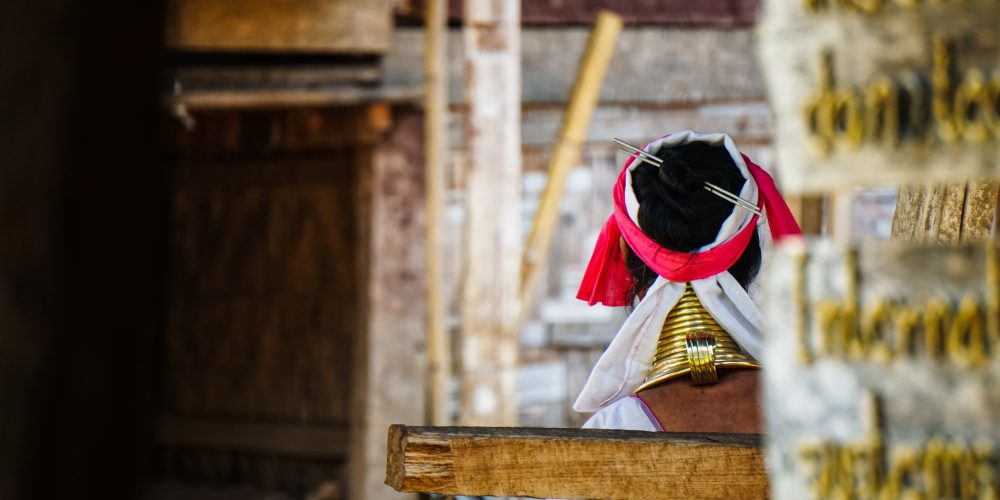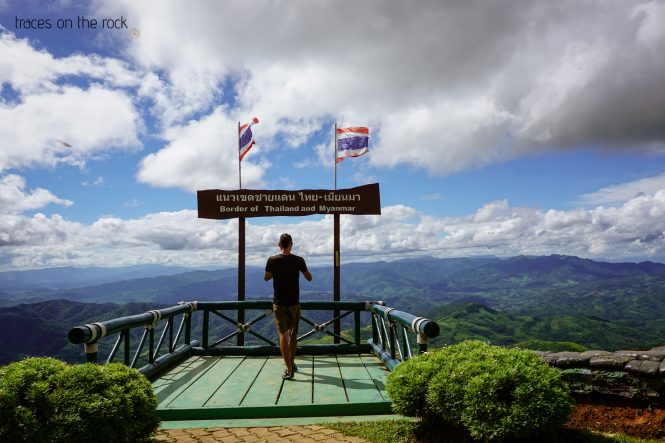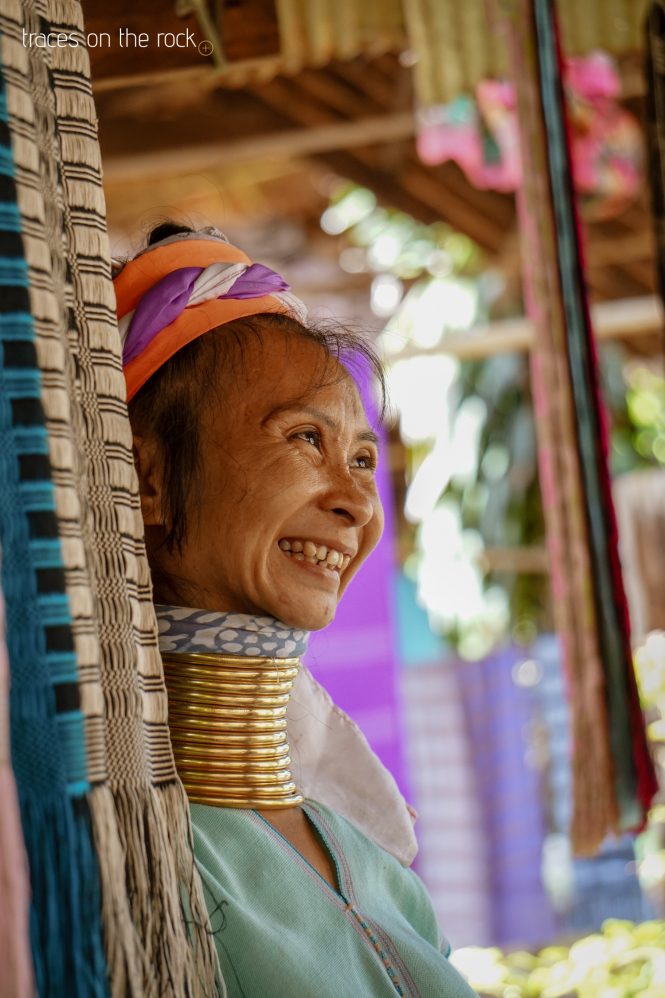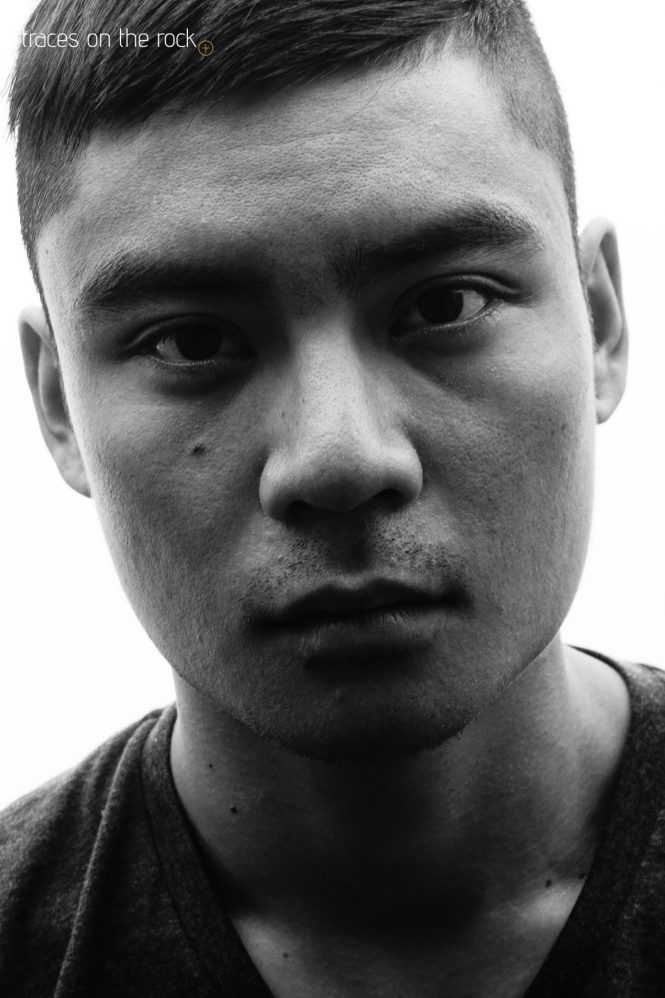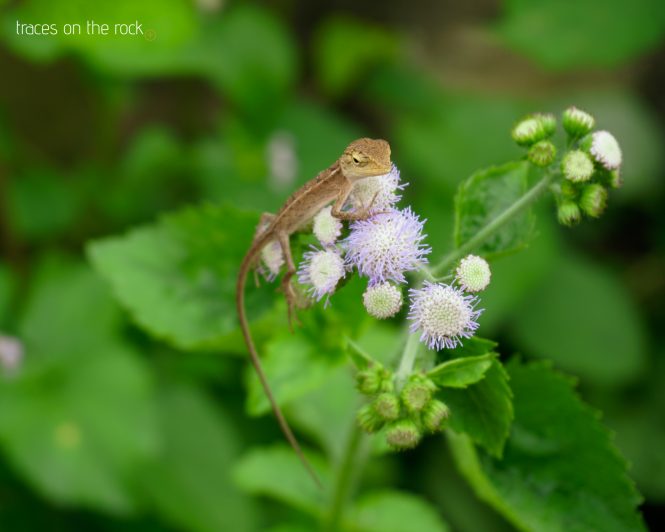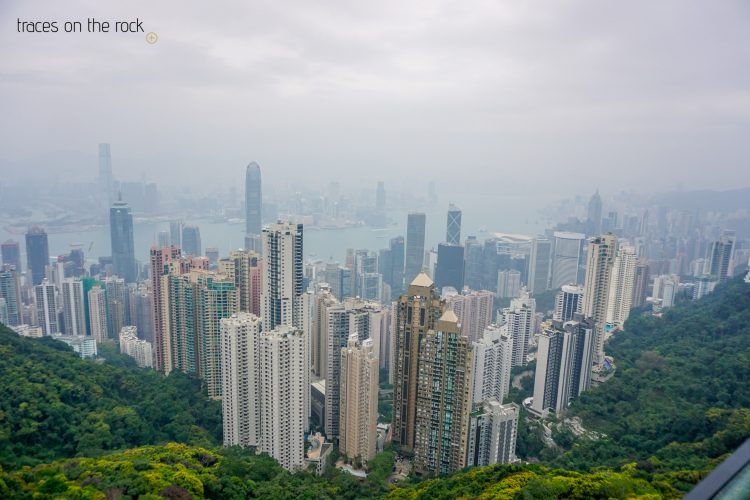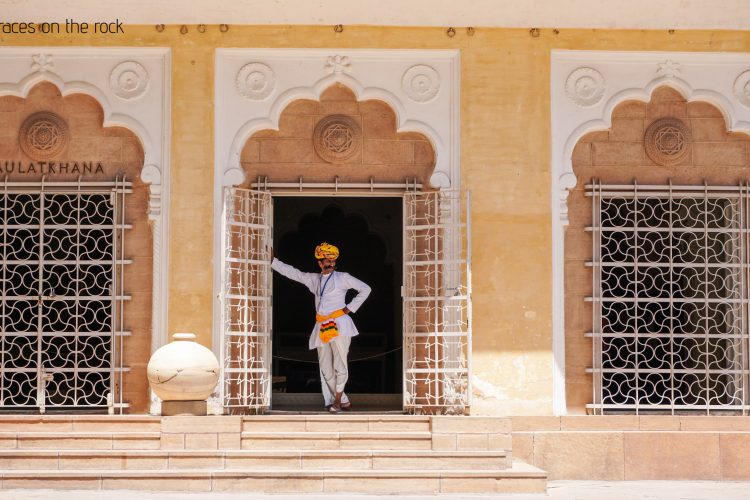Extensive rice fields and dense jungle raced past me. Actually, I raced past them on a small Honda Click. But sometimes she had to fight too. Then she had to climb foggy mountain passes. She did not like that so much. Apart from that, she was a wonderful companion to my tour with Armando on the Mae Hong Son (MHS) Loop and through the area in the infamous “Golden Triangle“.
Opium trade and strawbeery fields
The term Golden Triangle was used by Marshall Green, United States Assistant Secretary of State, at a press conference in July 1971. The Golden Triangle is an imaginary zone in the borderland of Thailand, Myanmar and Laos, which was notorious for the cultivation of opium poppy and the opium trade. Originally used by the mountain peoples as a stimulant and medicine, the demand for the intoxicant opened up new sources of income. In this context, the history of opium trading and the influence of colonial rulers in Southeast Asia and Asia must also be considered. One should commemorate the Opium Wars in China around 1839-1842 and 1856-1860. The conflict started when China banned the cultivation and consumption, as a result of the enormous problems that opium use has had on Chinese people. Thereupon, the British lost a huge source of revenue and put pressure on China, which ended in the infamous Opium Wars. In the years to come, poppy cultivation increasingly shifted towards Vietnam, Laos, Thailand and Myanmar due to political conflicts in China and the rise of communist movements. Nowadays, the opium trade has been contained in the Golden Triangle. In Thailand, the opium poppy cultivation is banned since 1958. At great expense, the government ran various programs to provide new income for the local population. For example, the so-called Royal Project Foundation, which was once founded by the former Thai king Bhumibol Adulyadej, aimed to replace opium cultivation with other crops such as strawberries. Tourism also contributed to curbing the opium poppy cultivation on the Thai side. Today, the opium cultivation in Thailand is largely banned. After the end of the political instability and the conflicts in Laos, opium cultivation is also be pushed back. Myanmar is now second largest producer of opium after Afghanistan. That the strawberry program is successful is shown by the numerous strawberry farms I pass. A wonderful overview of the history of the area is provided by the Hall of Opium. The museum informs about the 5,000-year history of opium and how it became dominant in the Golden Triagle.
The drive through the north of Thailand was worthwhile not only because of the interesting history. We loved the many small coffee shops that spread along the street, offering local coffees and wonderful views of mountains and rice fields. We explored the Lod Cave, which is famous for its population of bats that can only be visited with a bamboo raft. We visited the Phu Sang waterfall and the Wachirathan waterfall. We climbed Phu Chi Fa on the border to Laos and we trained together with the locals in the countless outdoor gyms. We loved not staying in the backpacker hotspots like Chiang Rai, which looked like adult theme parks. We loved the ride on our Honda Clicks through the wonderful scenery of Thailand.
Tha Kayan in Northern Thailand
But I could not avoid a questionable tourist attraction. We visited Huay Pu Keng, a Long Neck Village on the border to Myanmar. Actually, it is the ethnic minority of Padaung or Kayan, which is a subgroup of the Red Karen. Originally, they lived in the mountains of Myanmar or Vietnam. The Padaung, who are living in Thailand, fled Myanmar, where they had to fear an ethnic cleansing. Now most of them live in refugee camps or work as a tourist attractions in cultural experience villages. We visited such a village in the mountains of Northern Thailand. For this we had to park our mopeds and were driven by a small boat to the opposite side of the Pai river. After we had paid our entrance fee, the way led us through a 100m long street full of souvenir shops. Female traders in traditional dress wove scarves, made jewelry or posed as a photo motif. Apart from that they sold masks, carvings or slingshots.
The visit meant a lot to me. Five years earlier, I was faced with the same situation, whether I can morally accept visiting a village of the Padaung. At that time I had decided against it and still asked myself for a long time whether I had made the right decision. I did not want to spend half an hour in the village like most tourists, taking pictures and then going back to civilization. So I was very happy when I saw the sign for the guest house. We asked Mu Tae if we could stay overnight. She seemed surprised. She lived in this village for 25 years and speaks little English. It took half an hour to prepare our quarter. It was a small bamboo hut located just above the village with two mattresses on the floor and a mosquito net. Nobody had stayed here for a long time. And for a long time there was no one, shaking the beds and sheets. Some dead spiders hung in the net. Some of her legs were scattered on the sheet. We stayed anyway.
The tourist villages are the result of restrictive refugee policy. Refugees were not allowed to earn money. At the end of the 80s, the first sightseeing villages in Thailand emerged as part of an ethno-tourism practiced throughout Asia and Southeast Asia. The women of the Padaung were given the opportunity to escape life in the refugee camp and even earn some money. The condition, however, was to show off for the tourists. The concept of the villages is not new. Especially in the colonial period, so-called human zoo were created in Europe. For that, people who were perceived as “exotic” at that time were brought to Europe. Once there, they moved to ethnological expositions or performed in zoos or variety shows. The human zoo was supposed to testify to the foreigner, the exoticism and wealth of distant lands, and to promote colonialism. The most famous representative in Germany was Carl Hagenbeck (1844-1913). With the rise of the national socialism the human zoo disappeared increasingly.
In Thailand I find myself reminded of these human zoos. The Padaung females are not allowed to leave the villages, as this could reduce the demand when the Padaung appear in public spaces. The exoticism of the stranger and unknown would then disappear and dry up the source of income of the sightseeing villages. However, life in the ethno-village also changes the social structure of the family and the group. In the past, men were the main earners. Now women earn the majority of the money. Of course, such changes also pose problems in finding one’s identity and self-image. In 2008, more and more Padaung women laid off their rings in protest. They felt mistreated by the Thai government: departure bans, restriction of their freedom, etc. Filmmaker Marko Randelovic visited the village to get a picture of the place, talk to the local people, and hear what they think about their situation after the media has written about them in the context of the “human zoo”.
Currently, the village of Huay Pu Peng has established a new tourism model that includes workshops. It also operates a Facebook website and an Instagram account.

